

Across the globe, more than 700 million people live less than $1.90 a day — the poverty threshold set by the World Bank. Such severe privation is disproportionately concentrated in certain parts of the world.
Gross national income, or GNI, represents the sum of money earned by a nation’s people and businesses within a given year. Unlike GDP, GNI also measures income earned by corporations based in a given country but operating outside of its borders. GNI per capita is a useful measure for assessing the wealth of a country’s population.
Global GNI per capita — all the income earned worldwide in 2019 — was $17,591. This figure is representative of the pre-tax income the average person earns and is indicative of average quality of life. In dozens of countries, GNI per capita is a fraction of the global average.
Using data from the World Bank, 24/7 Wall St. reviewed the GNI per capita of the 194 nations and special regions with available data to identify the 10 poorest countries. GNI per capita figures for the most recent available year are calculated using purchasing power parity and are in current international dollars. Though some of these countries are in North America and Asia, the vast majority of the world’s poorest countries are in Africa.
While each of the countries on this list is facing different challenges that impede economic development, often stemming from years of struggles, these countries also often share many common elements. Many of these countries have been plagued by political instability and civil war in recent years and have limited or unreliable infrastructure. Though many of them are rich in valuable natural resources, like gold and oil, these assets often fuel internal conflict. These are the countries that control the world’s gold.
Trust in public institutions is also critical for drawing investment and economic development. However, according to a report by the nonprofit corruption watchdog Transparency International, government corruption is rampant in many of these countries. Here is a list of the most corrupt countries in the world.
Low incomes and widespread poverty in these countries has a devastating effect on public health. With relatively limited access to housing, education, nutrition, and health care — all factors that tend to improve health outcomes — life expectancy in these countries is low. With only one exception, life expectancy at birth in every country on this list is at least 3.9 years shy of the global average of 72.6 years.
Click here to see the 10 poorest countries in the world
Click here to see our detailed findings and methodology
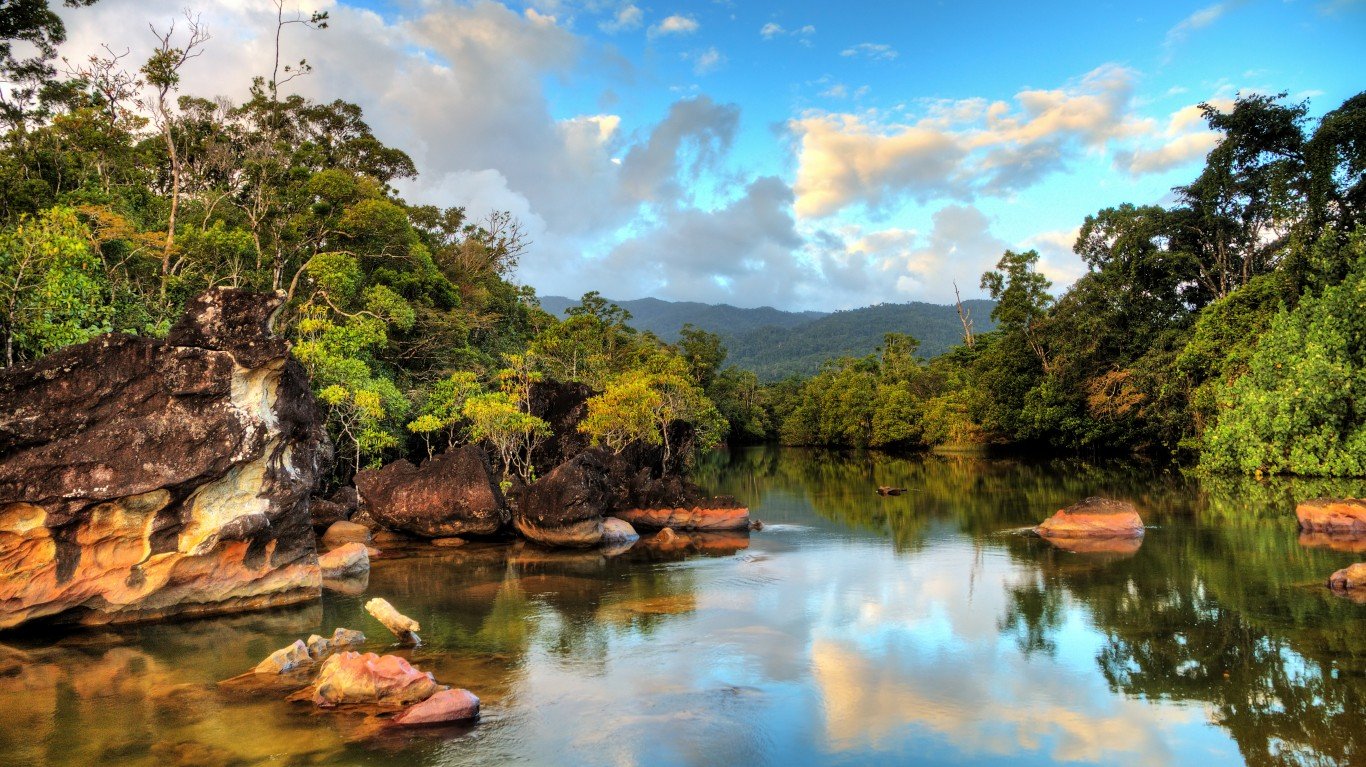
10. Madagascar
> GNI per capita: $1,660
> 2019 GDP: $14.1 billion (130th out of 206 countries)
> Population (2019): 27.0 million
> Life expectancy at birth in 2018: 66.7 years
Madagascar, an island nation off the coast of East Africa, is one of the poorest countries in the world, with a GNI per capita of $1,660. Though it exports over $1 billion of agricultural products like vanilla and cloves and has a strong tourism industry, it is dependent on foreign aid.
Development in Madagascar is held back by government corruption and lack of infrastructure. Only about one-quarter of the country’s 27 million residents have access to electricity, and 77.6% of the population lives on $1.90 or less per day.
[in-text-ad]
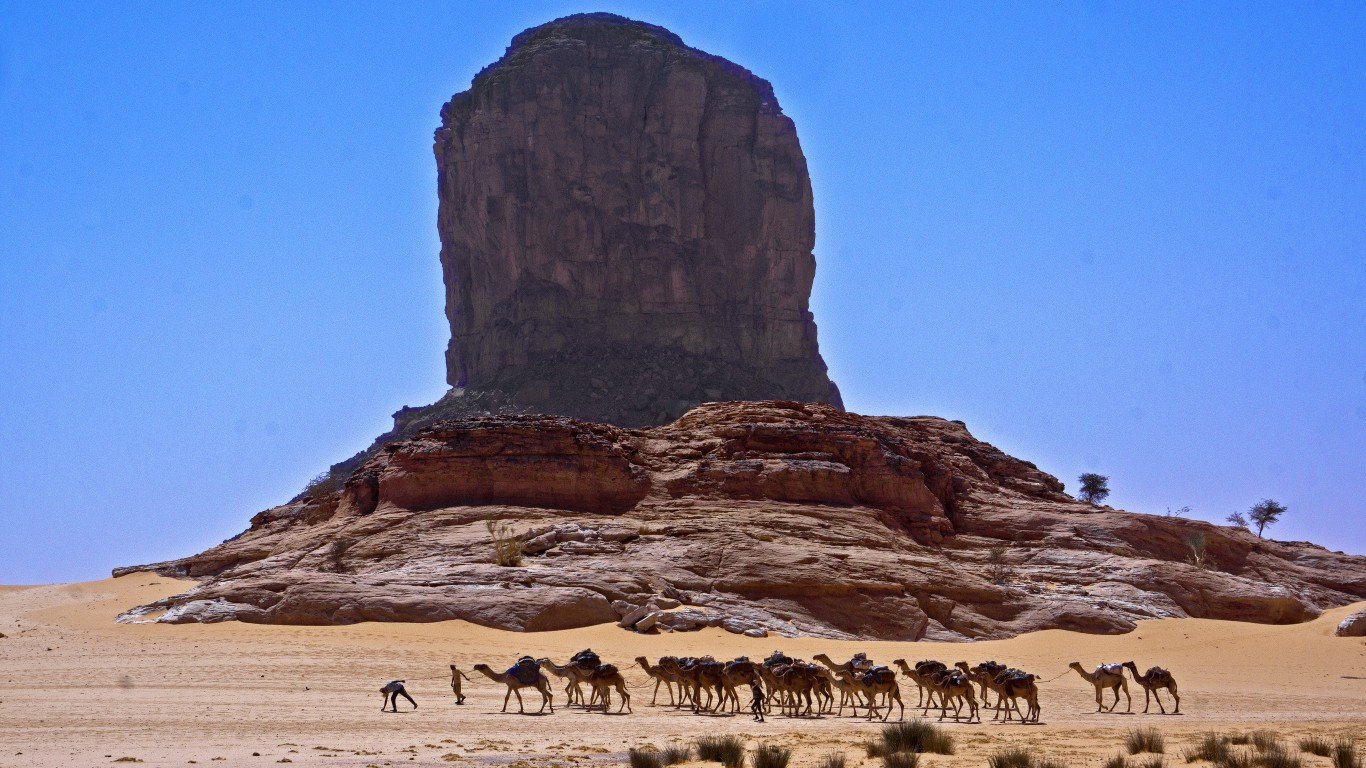
9. Chad
> GNI per capita: $1,620
> 2019 GDP: $11.3 billion (142nd out of 206 countries)
> Population (2019): 15.9 million
> Life expectancy at birth in 2018: 54.0 years
Chad’s $11.3 billion economy is smaller than that of some countries home to far fewer people. It has the ninth lowest GNIs per capita, at $1,620.
Poorer countries often face significant health challenges related to poverty and lacking health care systems among other factors. Chad’s life expectancy at birth is just 54 years — nearly two decades less than the global average and the third lowest of any country on Earth. The country also has the fifth highest infant mortality rate of any country, at 71.4 deaths per 1,000 live births.
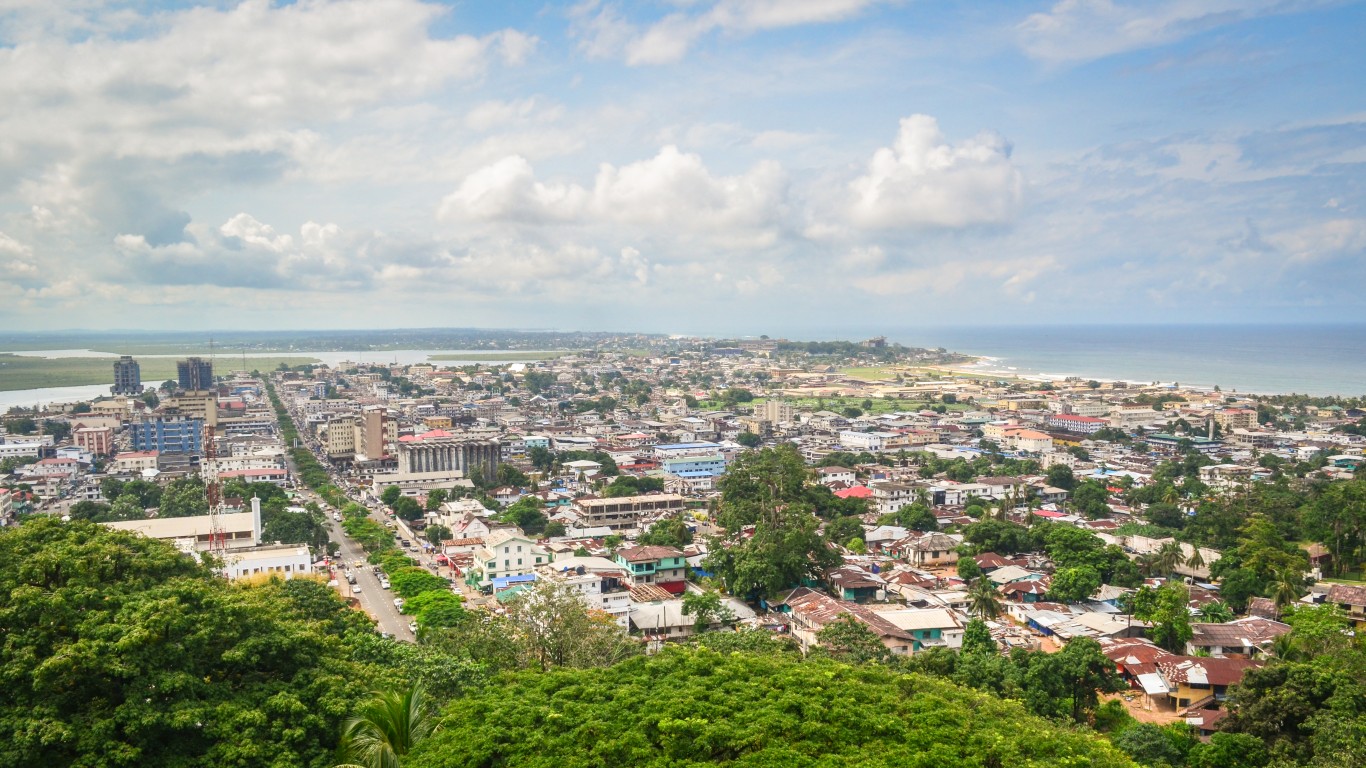
8. Liberia
> GNI per capita: $1,320
> 2019 GDP: $3.1 billion (171st out of 206 countries)
> Population (2019): 4.9 million
> Life expectancy at birth in 2018: 63.7 years
The West African nation of Liberia, founded by freed American slaves, is one of the poorest countries in the world. Liberia has a GNI per capita of $1,320, and 40.9% of the population lives on $1.90 or less per day. Like many poor countries, Liberia is heavily dependent on farming. The agriculture, fishing, and forestry sector accounts for 39% of the country’s GDP, compared to the global average of about 4%.
Less than half the country’s 15 and older residents are literate, and only about a quarter of the total population has access to electricity. Government corruption is also a barrier to Liberia’s development.
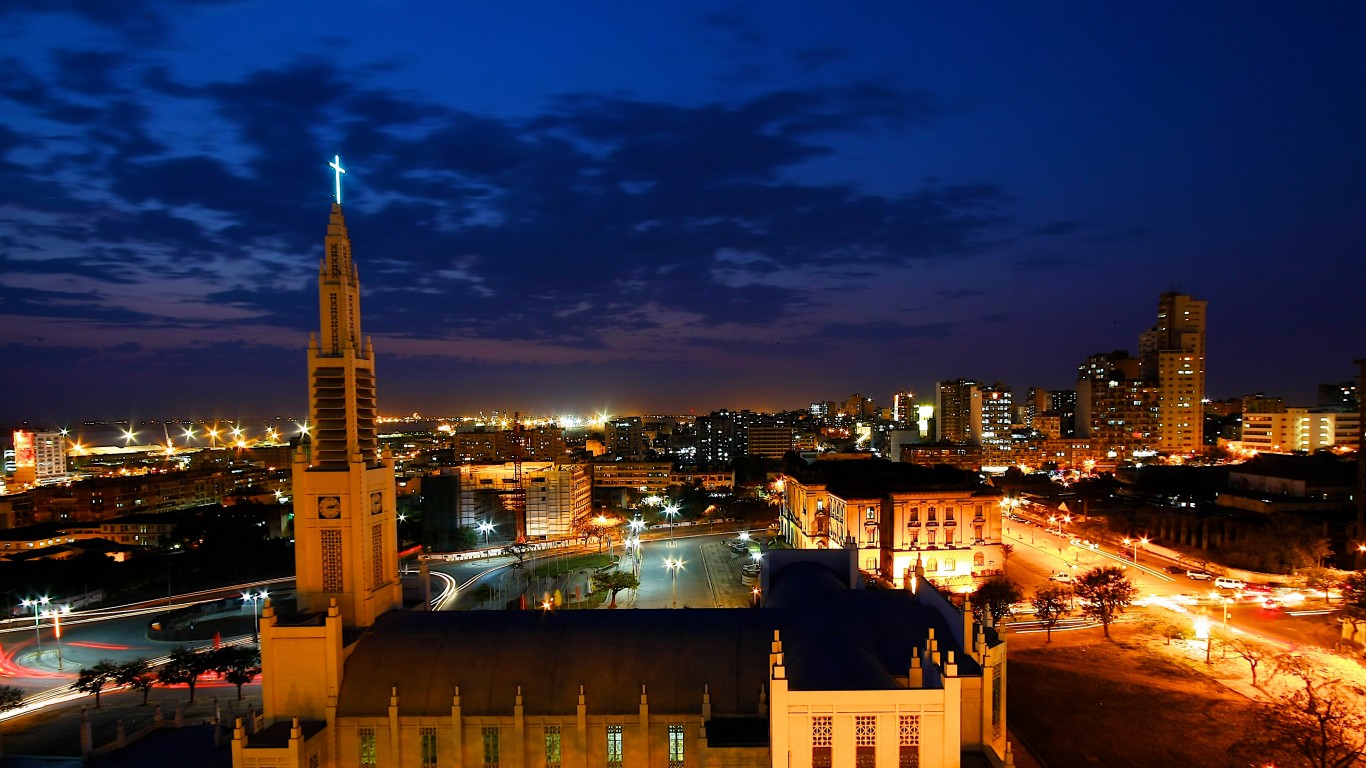
7. Mozambique
> GNI per capita: $1,300
> 2019 GDP: $14.9 billion (125th out of 206 countries)
> Population (2019): 30.4 million
> Life expectancy at birth in 2018: 60.2 years
Mozambique is one of just seven nations with a GNI per capita of $1,300 or lower. It has the fifth highest extreme poverty rate of any nation, as 62.9% of its population lives on $1.90 per day or less.
Mozambique residents are more likely to face significant health challenges than those in almost every other country. More than one in eight residents ages 15 to 49 have been diagnosed with HIV, as compared to 0.8% of people worldwide. Mozambique’s incidence of tuberculosis is 551 per 100,000 people, more than four times the global concentration of the disease.
[in-text-ad-2]
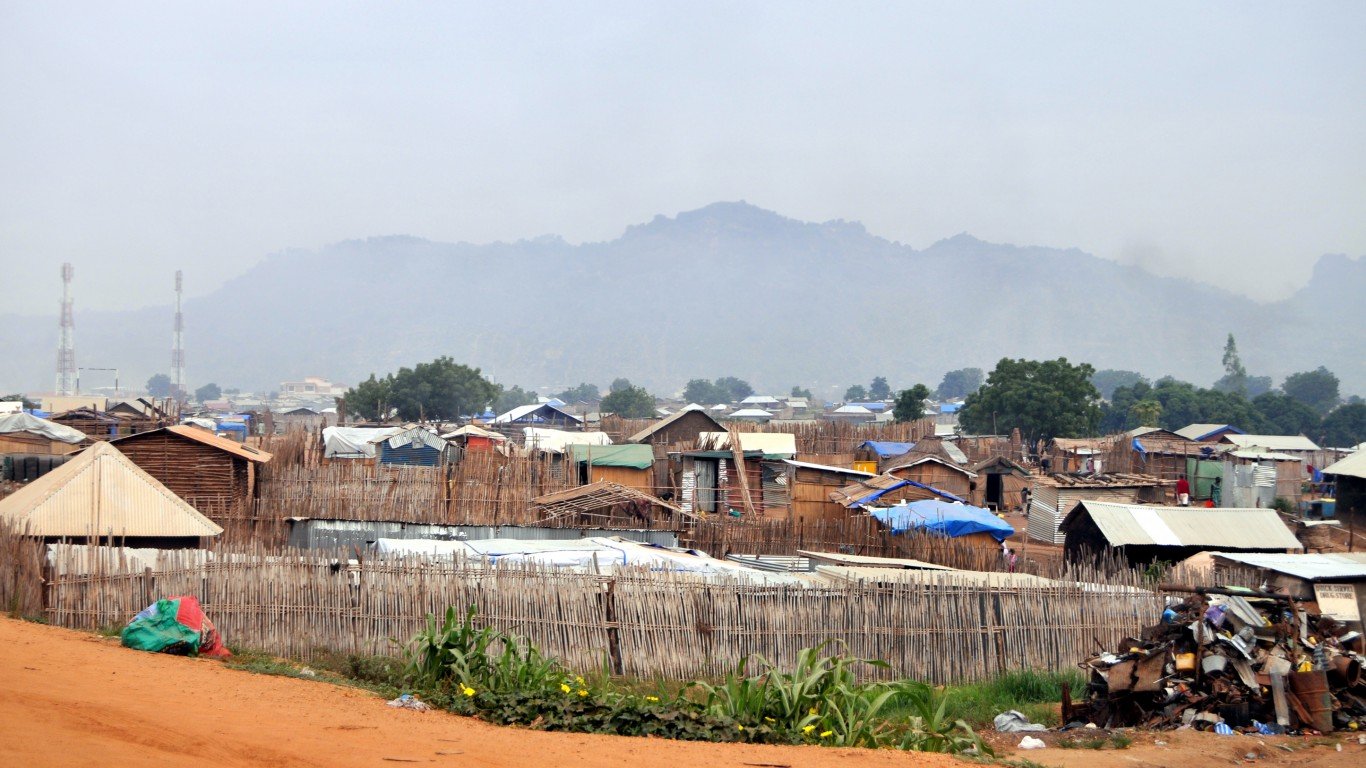
6. South Sudan
> GNI per capita: $1,280
> 2015 GDP: $12.0 billion (140th out of 206 countries)
> Population (2019): 11.1 million
> Life expectancy at birth in 2018: 57.6 years
South Sudan was formed in 2011, gaining independence from Sudan as part of a peace deal that ended Africa’s longest-running civil war. Yet for most of the country’s existence to date it has suffered from its own devastating civil war. Infrastructure is lacking in the country as only about 2% of the roadway is paved, and only 28% of the population has access to electricity.
South Sudan is also one of the most corrupt countries in the world. Though the country is rich in natural resources like oil, water, and fertile soil, the vast majority of goods in the country are imported. South Sudan’s GNI per capita is just $1,280.
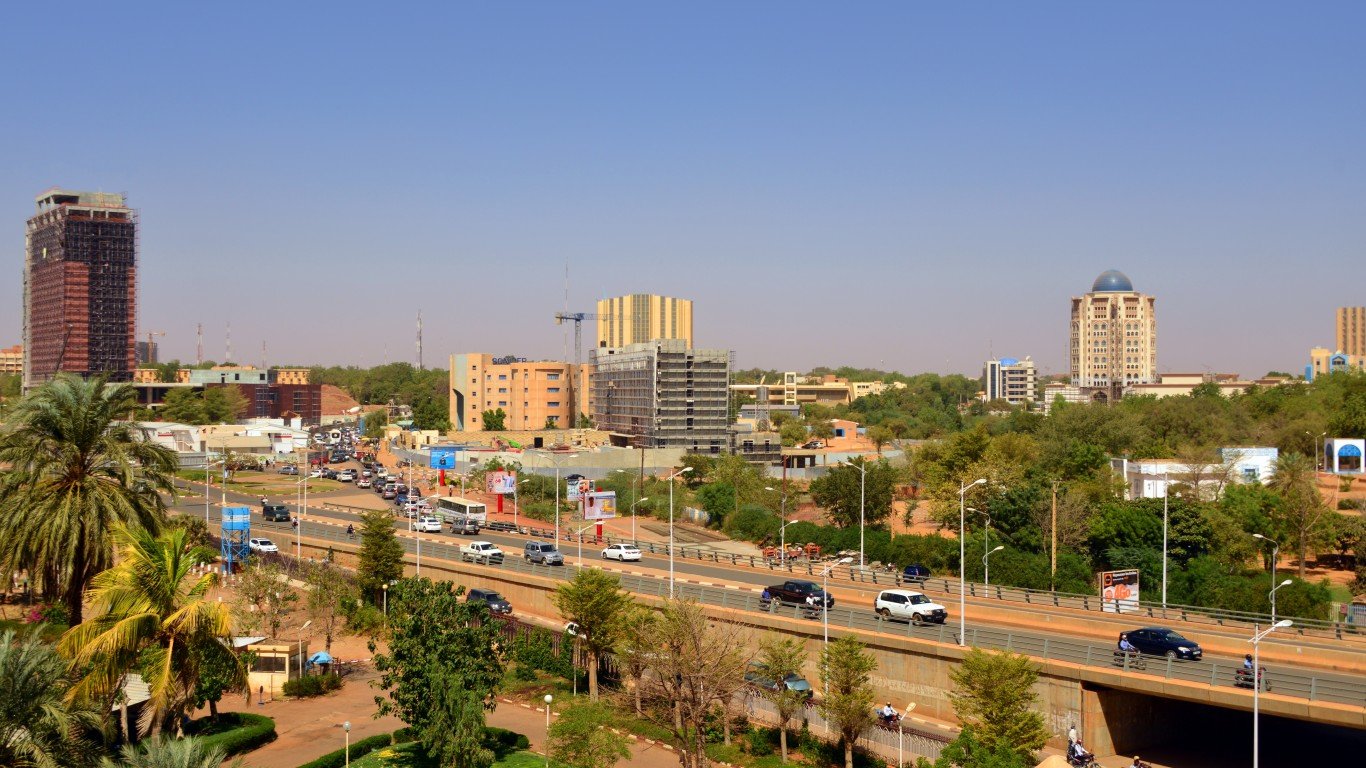
5. Niger
> GNI per capita: $1,250
> 2019 GDP: $12.9 billion (135th out of 206 countries)
> Population (2019): 23.3 million
> Life expectancy at birth in 2018: 62.0 years
Niger exported just $539 million of goods in 2018, less than the vast majority of other countries. Gold accounted for over $300 million worth of these exports, with much of the rest coming from agricultural products.
More than 83% of Niger’s population lives in rural areas, and its economy is more reliant on agriculture than almost any other nation’s is — 38.2% of its GDP comes from agriculture, forestry, or fishing. Niger’s GNI per capita is one of the lowest in the world, at $1,250.
[in-text-ad]

4. Democratic Republic of the Congo
> GNI per capita: $1,110
> 2019 GDP: $47.3 billion (91st out of 206 countries)
> Population (2019): 86.8 million
> Life expectancy at birth in 2018: 60.4 years
Like many other countries on this list, the Democratic Republic of the Congo is rich in valuable mineral resources. Rather than being an economic boon, however, control of these resources has fueled violence and a civil war that has resulted in millions of deaths and government corruption.
The country ranks among the poorest in the world with a GNI per capita of just $1,110. More than three-quarters of the country’s 86.8 million residents live on $1.90 or less per day, below the poverty line set by the World Bank.
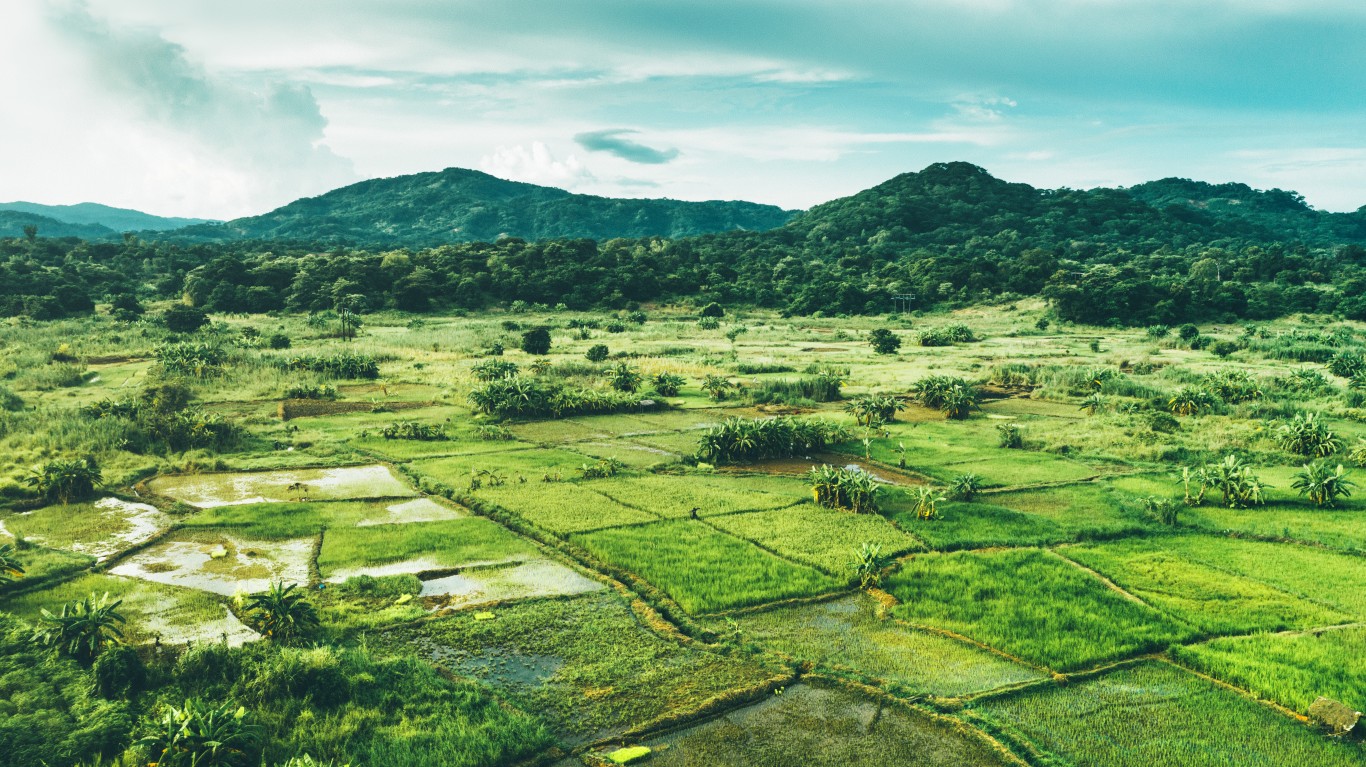
3. Malawi
> GNI per capita: $1,080
> 2019 GDP: $7.7 billion (150th out of 206 countries)
> Population (2019): 18.6 million
> Life expectancy at birth in 2018: 63.8 years
Malawi’s GNI per capita of $1,080 is a fraction of the worldwide GNI per capita of $17,591. More than 70% of the nation’s residents live on $1.90 per day or less, as compared to 10% of the world’s population overall.
Malawi is a largely rural country with an economy that relies on agriculture. Nearly 83% of the country lives in rural areas, and tobacco accounts for more than two-thirds of its total annual export value.
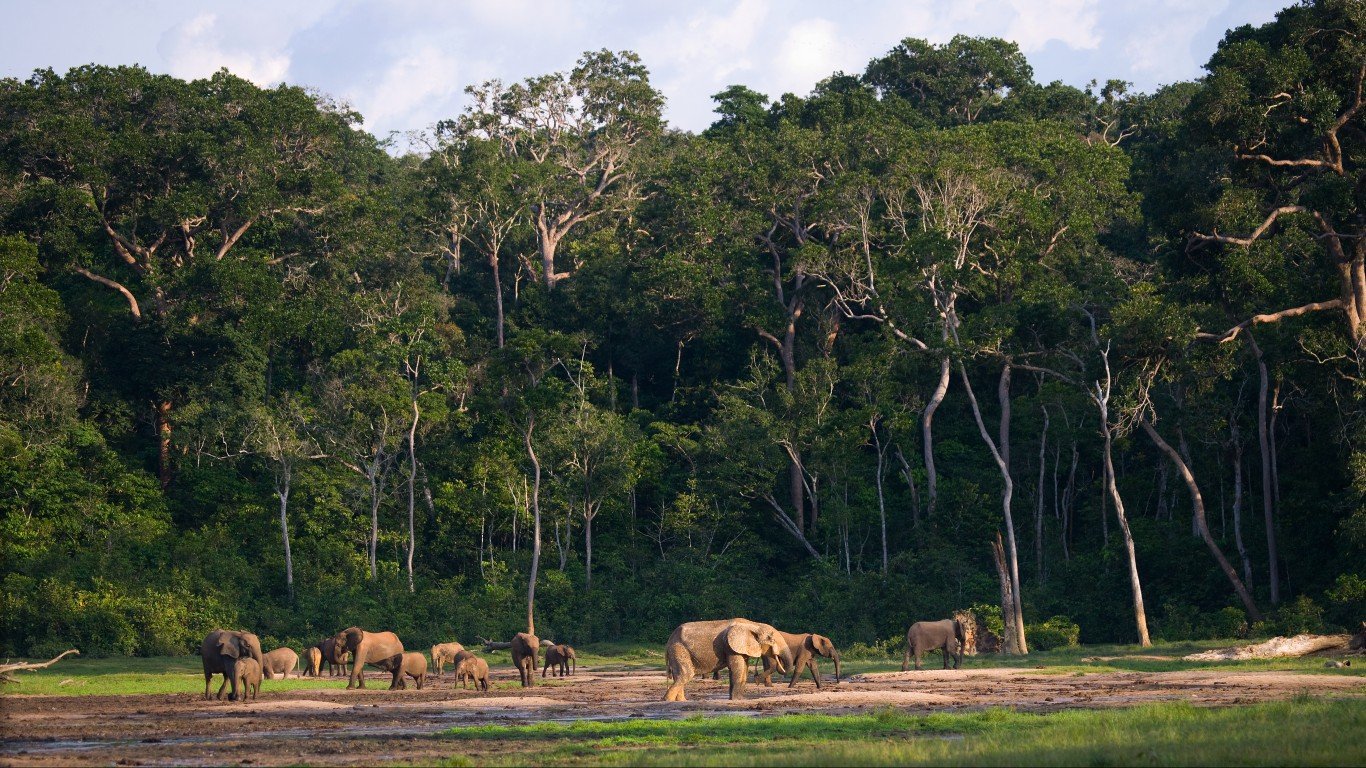
2. Central African Republic
> GNI per capita: $1,060
> 2019 GDP: $2.2 billion (178th out of 206 countries)
> Population (2019): 4.7 million
> Life expectancy at birth in 2018: 52.8 years
The Central African Republic has the second lowest GNI per capita, at just over $1,000. It exported less than $100 million worth of goods in 2018 — which accounts for a very small share of its GDP — over 70% of which was wood.
Like many other impoverished nations, the Central African Republic has among the worst health outcomes in the world. It has the lowest life expectancy at birth of any country at 52.8 years — nearly two decades lower than the worldwide average life expectancy. It also has the highest infant mortality rate, at 84.5 deaths per 1,000 live births.
[in-text-ad-2]
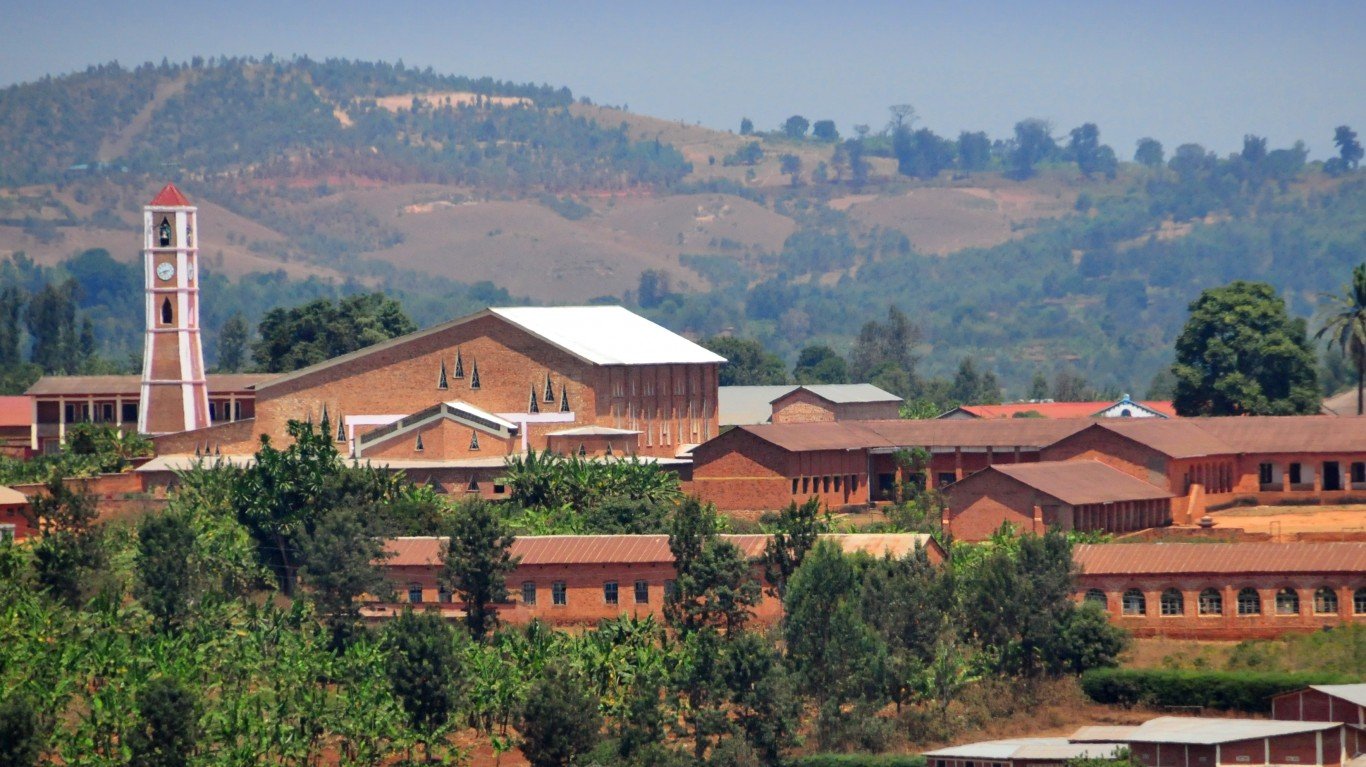
1. Burundi
> GNI per capita: $780
> 2019 GDP: $3.0 billion (174th out of 206 countries)
> Population (2019): 11.5 million
> Life expectancy at birth in 2018: 61.2 years
Burundi is the poorest country in the world by a wide margin. Its gross national income per capita is just $780, as compared to a worldwide GNI per capita of $17,591. It is the only country with a GNI per capita below $1,000. More than 70% of its population lives on $1.90 per day or less — over 8 million total people.
Like many other countries that rank among the world’s poorest, the majority or Burundi’s residents live outside urban areas — 86.6% reside in rural areas, the second highest share of any country and nearly double the worldwide share. The country had just $272 million in exports in 2018, far less than most other countries, 41.5% of which was in gold.
Methodology:
To determine the poorest countries in the world, 24/7 Wall St. reviewed data on GNI per capita for 194 countries and special regions with available data from the World Bank. The World Bank estimates GNI per capita using the purchasing power parity method, and figures are in current international dollars. All data on GNI per capita is based on the most recent available year for a given country.
Additional data, measuring GDP in current U.S. dollars, population, life expectancy at birth, and access to electricity also came from the World Bank. All data are for the most recent year available for every country.
We also considered data on levels of public sector corruption from the nonprofit, international watchdog and anti-corruption group, Transparency International.
Take This Retirement Quiz To Get Matched With A Financial Advisor (Sponsored)
Take the quiz below to get matched with a financial advisor today.
Each advisor has been vetted by SmartAsset and is held to a fiduciary standard to act in your best interests.
Here’s how it works:
1. Answer SmartAsset advisor match quiz
2. Review your pre-screened matches at your leisure. Check out the
advisors’ profiles.
3. Speak with advisors at no cost to you. Have an introductory call on the phone or introduction in person and choose whom to work with in the future
Take the retirement quiz right here.
Thank you for reading! Have some feedback for us?
Contact the 24/7 Wall St. editorial team.
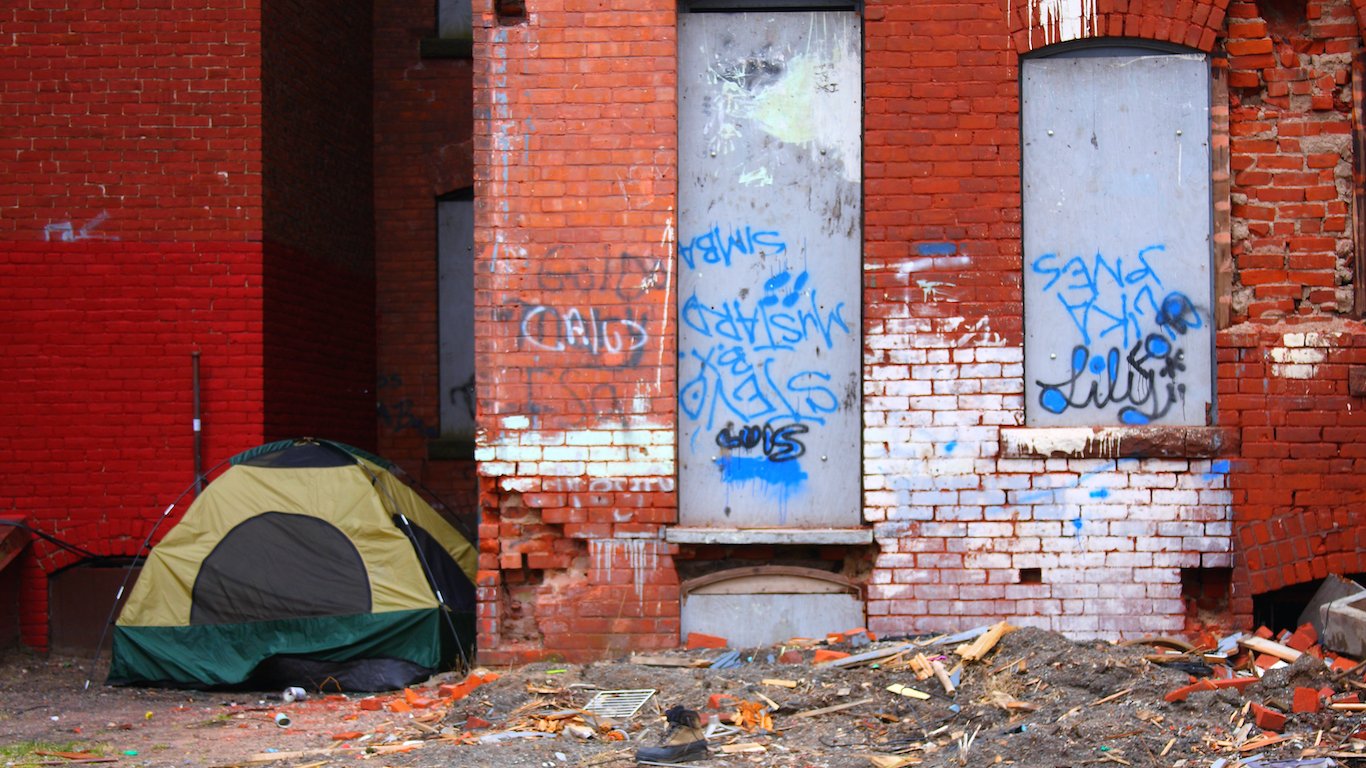 24/7 Wall St.
24/7 Wall St. 24/7 Wall St.
24/7 Wall St.


